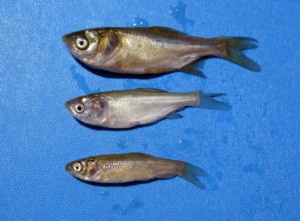We have much more to do and your continued support is needed now more than ever.
Water Samples Positive for Asian Carp Environmental DNA in Lake Erie
State and federal officials have announced that six water samples from Lake Erie have tested positive for Asian carp environmental DNA (eDNA).
The samples were among over 400 samples taken in August of last year, and are the first positive samples for Asian carp eDNA in Michigan or Ohio waters since eDNA surveillance began in 2010.
Four of the samples from Sandusky Bay (Ohio waters) were positive for bighead carp, and two samples from north Maumee Bay (Michigan waters) were positive for silver carp. In response to the findings, officials began electro-shocking and netting last Friday in Sandusky Bay, and no evidence of Asian carps was found.
Environmental DNA analysis is being increasingly used to monitor for the potential presence of invasive Asian carps in the Great Lakes. The technique (which involves analysis of material in water such as scales or mucous) can indicate whether a species has been present in the area in the recent past, though there can be positive results even if a fish is dead.

The study found that along with Lakes Michigan and Huron, Lake Erie was at greatest risk of introduction, given high potential for bighead and silver carp to arrive, spread, survive, and establish breeding populations.
This risk assessment followed on a recent assessment by USGS researchers which indicated that conditions in tributaries and the open water of Lake Erie would be sufficient to allow Asian carps to spawn and mature in the lake.
According to Michigan Department of Natural Resources (MDNR) and Ohio Department of Natural Resources, the positive results have led to a plan of action among state and federal agencies and the eDNA research team. MDNR has also created a Web site for reporting on Asian carps sightings.
These results further highlight the urgency of both addressing the ongoing threat of migration of Asian carps from the Mississippi River Basin to Lake Michigan (through acceleration of a determination on viable hydrological separation measures in the Chicago Area Waterways System) as well as enhancing early detection and rapid response efforts in the region, in particular in areas considered to be at highest risk of introduction of Asian carps.






















